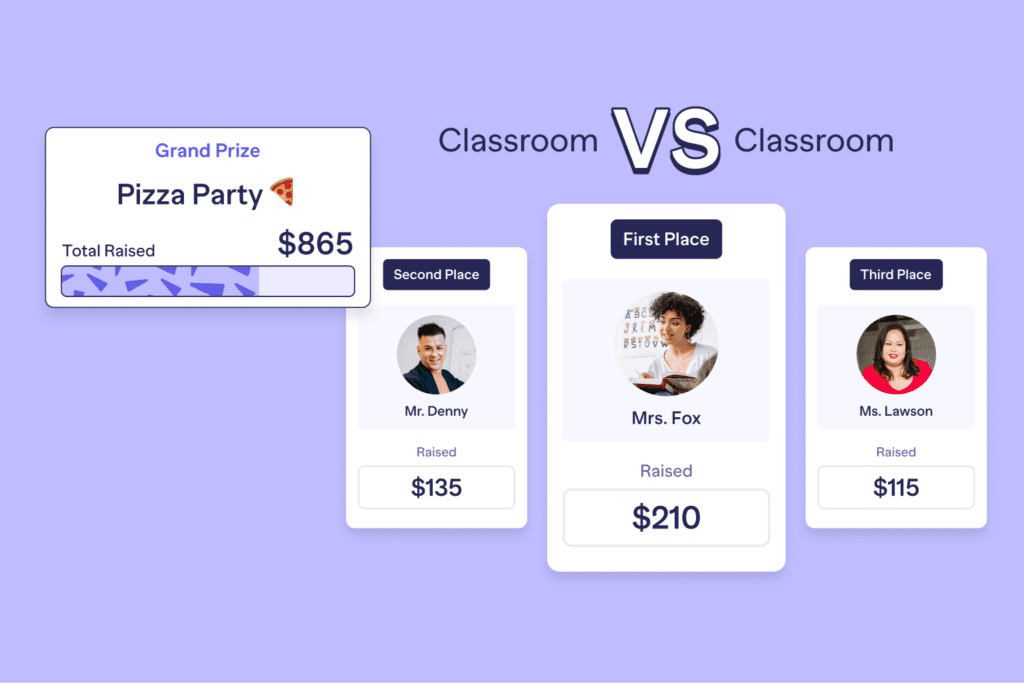In the changing world of school funding, schools need to keep good relationships with their donors to make sure they have a steady and increasing amount of support. When it comes to building strong connections with donors for school fundraising, it’s important to keep things legal and ethical. That means following the rules and being upfront about where the money goes. People want to know their donations are making a difference, so being open about finances builds trust. Also, respecting donors’ privacy helps them feel secure and valued. By sticking to these principles, schools can lay a solid foundation for long-lasting relationships with donors, which is key for ongoing fundraising success.
Beyond just getting money, it’s crucial to show donors that their support really matters. That means keeping track of how their donations are used and sharing the results. Demonstrating the impact of their contributions helps donors feel good about what they’ve done. Plus, keeping them in the loop about ongoing projects lets them stay involved and connected to the school’s mission.
By working together like this, schools and donors can achieve big things and make a real difference for students. Here are some ways schools can build better long-term connections with their donors:
1. Why do donors give? Let’s get personal
At the core of every donation lies a story, a connection, or a personal conviction. Many supporters are alumni, parents, or local community members who’ve seen firsthand the transformative power of education. They’re driven by a deep-seated desire to give back, ensuring that current and future students receive the same opportunities that were pivotal in their own lives. Sharing compelling narratives that highlight the direct impact of contributions on students, teachers, and school programs is not just effective; it’s essential. It turns abstract numbers into heartwarming successes, from new library books to scholarship funds that bring dreams within reach.
Here are some ways to understand donors’ motivation:
Surveys: Sending out detailed surveys to the donor community can help identify trends and individual reasons for supporting the school. These surveys could include questions about which programs they feel most passionate about, whether it’s sports, arts, or science, and what changes they would like to see.
Feedback forms at events: During school events like open houses or sports games, providing feedback forms that include questions about donor motivations can offer insights in a casual yet direct way effectively.
2. Personalized communication: the key to engagement
Personalized communication is crucial in fostering strong donor relationships. This means going beyond generic thank-you notes and providing updates that resonate with each donor’s interests. For instance, if a donor is particularly interested in your school’s arts program, sending them updates about new art supplies or success stories from recent art shows can make a significant impact. Here is an example of what this might look like:
Customized newsletters: Instead of a one-size-fits-all newsletter, schools could segment their mailing list based on donor interests and send customized content. For example, donors who are former athletes might receive updates about new athletic facilities or the school’s latest sports achievements.

3. Create a donor recognition program
Developing a donor recognition program is an effective way to show appreciation and build loyalty. Recognition can be tiered based on the level of contribution, providing different benefits or acknowledgments for each level. Here are some examples of what this might look like:
Donor walls: Establish a donor wall in a prominent area of the school where the names of significant donors are displayed. This can be updated annually to include new contributors.
Recognition events: Host special events, such as breakfasts or receptions, exclusively for donors. These events not only serve as a thank you but also provide an opportunity for donors to see the impact of their contributions firsthand.
Named opportunities: Offer opportunities to name classrooms, scholarships, or endowments in honor of significant donors or their loved ones. This can create a lasting legacy and deepen the donor’s emotional connection to the school.
4. Involve donors in school activities
Involving donors in the school’s activities can deepen their engagement and commitment. By experiencing the school’s environment and student interactions, donors feel more connected and invested in the institution’s success. Here are some ways to involve donors:
Guest teaching opportunities: Invite donors with expertise in certain areas to give a guest lecture or workshop. This involvement can be particularly engaging for alumni who are looking to give back to their school in more ways than just financially.
Art and cultural events: Encourage donors to attend school plays, art shows, or concerts. Seeing students in action can be a powerful demonstration of the impact of their contributions.
Advisory roles: Include some donors in advisory capacities on boards or committees, especially those who bring specific expertise that can benefit the school’s strategic planning or operations.
5. Diverse fundraising methods
To enhance donor relationships and keep the fundraising landscape vibrant and engaging, schools can strategically use various types of Fundraising Activities. This approach not only helps in maximizing financial contributions but also deepens the relationship between schools and their donors by engaging them in meaningful ways.
Here are a variety of fundraising methods to incorporate, each designed to cater to a wide range of donors:
Auctions
Auctions are a dynamic way to generate excitement and participation. They can be conducted live, online, or as a combination of both, known as hybrid Auctions.
- Live Auctions: Organize a themed event, such as a gala dinner, where items donated by local businesses or crafted by students and staff are auctioned off. A live Auction event can also feature performances by students, which adds a personal touch and directly showcases the talents that are benefiting from the fundraising.
- Online Auctions: Utilize platforms like <<RallyUp Schools>> to host an online Auction. This can include items like signed memorabilia, vouchers from local businesses, or unique experiences such as a day with a local celebrity chef. Online Auctions have the advantage of reaching a wider audience, including those who may not be able to attend in-person events.
Example: A high school could host an annual “spring art Auction,” featuring artwork created by students and local artists. This not only helps raise funds but also supports local artists and highlights student talents.
Crowdfunding
Crowdfunding is effective for specific projects or goals and allows a wide range of people to contribute small amounts, which collectively add up to substantial sums.
- Project-based Crowdfunding: Launch a campaign for specific needs such as new sports equipment or library books. Clearly outline what the funds will be used for and update donors on the progress and impact of their contributions.
- Event-based Crowdfunding: For instance, if the school’s band is invited to perform at a regional or national event, a Crowdfunding campaign can help cover travel and accommodation expenses.
Example: A middle school needs new lab equipment. The science department can initiate a Crowdfunding campaign titled “Equip our future scientists,” complete with videos of students conducting experiments using outdated equipment, emphasizing the need for updated resources.

Peer-to-Peer Fundraising
Peer-to-Peer fundraising leverages the networks of individuals connected to the school to raise money. Each participant creates their own fundraising page, connected to the main event or cause.
- Competitions: Encourage friendly competition among classes or grades to see who can raise the most money. Offer incentives like a pizza party or a no-homework day for the winning class.
- Special Occasions: Encourage students and parents to use their special occasions, like birthdays or anniversaries, as opportunities to raise funds in place of gifts.
Example: For an annual “Run-A-Thon,” students and parents can sign up to run a 5K, each with a personal fundraising goal. They share their personal fundraising pages on their social media, explaining their personal motivation for participating and the impact of the donations.
6. Transparency and trust: the dynamic duo
In the world of giving, trust is everything. Donors want to know that their hard-earned money is not just appreciated but also used wisely. Transparent financial reporting becomes your best friend here. It’s about showing, not just telling, how every dollar contributes to tangible outcomes. This openness not only cements trust but also encourages further generosity. It’s like saying, “look at the amazing things we’ve achieved together—let’s keep the ball rolling!”
Impact reports: Produce detailed annual reports that highlight successes and challenges, show how funds are being used, and outline future needs. These reports should be visually engaging and easy to understand.
Personal updates: For larger donors, consider more personalized updates. For example, if a donor-funded a new science lab, sending them a video message from students using the facility or inviting them to a special lab demonstration can make a big impact.
Best practices for donor appreciation and engagement
Donor appreciation is more than just saying thank you. It involves continuous engagement and recognition. Here are some best practices:
- Social media shoutouts: Regularly recognizing donors on your school’s social media platforms can provide public acknowledgment and encourage further engagement.
- Event & Ticketing: Use technology to facilitate easy access to school events, perhaps offering early ticket access to frequent donors.
- Direct communications: Regular newsletters, impact reports, and direct messages can keep donors informed about how their contributions are making a difference.
RallyUp Schools: Enhancing School Fundraisers
The advantages of using RallyUp Schools for creating and managing school fundraisers cannot be overstated. The platform is user-friendly and offers a variety of customizable options that cater to different fundraising needs—from Auctions and product Sales to Events & Ticketing and online campaigns. The ease of setting up recurring donations not only helps in building sustained support but also in planning long-term educational programs.
RallyUp Schools empowers schools to create engaging, successful fundraising campaigns that resonate with donors and provide the necessary funds to enhance educational opportunities. By embracing this platform, schools can ensure that their fundraising efforts are as effective and efficient as possible, leading to stronger donor relationships and a more secure future for their students.
For schools looking to elevate their fundraising strategies and deepen donor relationships, embracing a comprehensive approach that includes understanding motivations, personalized communications, and the strategic use of technology is the key to success. RallyUp Schools stands ready to support these efforts with its strong features and user-friendly design.
Incorporating these strategies helps secure funds and build a community united to advance educational opportunities.
